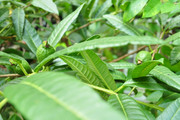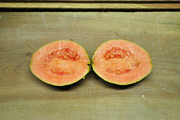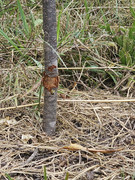Weeding is not just for plants, it is also for libraries, and I am weeding out a few extra books from my fruit growing library.
USPS Media Mail shipping is included in the price for these books. I will consider shipping them internationally if there is no interest among any American buyers with the international shipping cost to be covered by the buyer. A couple of these books are of a reasonable weight and will not cost an exorbitant amount to ship internationally, but
The Encyclopedia of Fruit & Nuts is extremely heavy and shipping from the United States overseas would likely be prohibitively expensive. Its shipping is expensive enough within the United States.
I only accept PayPal.
These books will be securely packed and promptly shipped once payment is received with a tracking number provided after they are shipped.
I only have one copy of each of these books, so it is first come, first served.
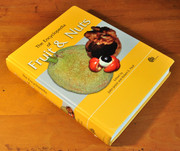
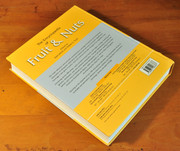
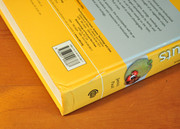




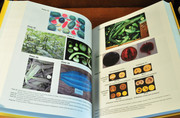


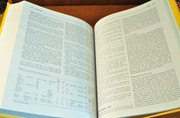 The Encyclopedia of Fruit & Nuts
The Encyclopedia of Fruit & Nuts was edited by Jules Janick and Robert E. Paull and published in 2008 by CABI (Centre for Agriculture and Bioscience International). It is a hardcover, no dust jacket as issued, that measures 9x11.25 in. (226x284 mm.) with xviii+954 pages plus 20 pages of plates. The ISBN-13 number is 9780851996387. The text is in English, and it is a text-heavy book, illustrated by botanical line drawings and a color plate section of photographs. For whatever reason, CABI did not give this book a table of contents, but my photographs of various pages should give you an idea of the book's contents and how they are arranged.
Book description from the rear cover: “This major reference work provides comprehensive coverage of botanical and horticultural information on temperate, subtropical and tropical fruits and nuts of economic significance. Coverage is also given to palms, cacti and common fruit often thought of as vegetable crops. Containing almost 300 entries, topics covered include history and origins, ecology, breeding and genetics, distribution, uses and nutritional composition. Arranged alphabetically by family and species, each entry is followed by a selected bibliography to aid further reading on the topic. Entries are illustrated with figures, tables and graphs as well as colour photographs accompanying the major fruit crops. Drawing on the expertise of over 100 international specialists, this encyclopedia will be an invaluable and informative reference source for students and researchers in horticulture, pomology, botany and plant ecology.”
Condition: This book is in overall good condition. The hardcover boards have some corner bumping, particularly at the base of the spine, which has caused creasing and small surface tears, as well as there being a 1.25 in. (30 mm) long surface cut on the edge of the spine and rear cover, but the boards have no stains or other major damage. The binding is strong and intact. The interior is clean and unmarked with no writing, highlighting, or underlining and has no tears, dog-eared pages, stains, mold, or other major damage. The page edges have no remainder mark, foxing, stains, or any major damage.
The price for this book is $150 $135. SOLDMy opinion: An excellent book. The reason I’m selling this copy is because I have another copy. Although somewhat geared towards agricultural professionals, it is not a difficult read, no different than Julia Morton’s
Fruits of Warm Climates, which I would put it on par with as far as essential fruit books to own. The major fruits get more coverage, and you are not going to find any obscure Eugenias in it, but at nearly 1000 pages, there isn’t a more comprehensive fruit book that has ever been published. Its comprehensiveness is matched by its original price tag of $390, though CABI let it go out-of-print a few years ago, content to sell eBooks at an even higher price. Although this copy is not in perfect condition, it is still a great reference copy from a reliable seller at a price lower than other comparable copies.
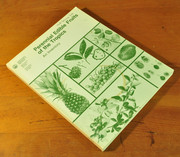
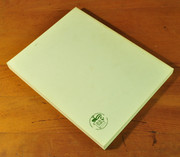
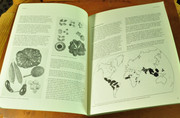
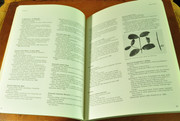

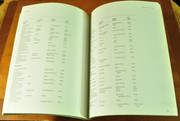 Perennial Edible Fruits of the Tropics: An Inventory
Perennial Edible Fruits of the Tropics: An Inventory was written by Franklin W. Martin, Carl W. Campbell, and Ruth M. Ruberté and published in 1987 by the United States Department of Agriculture. It is Agriculture Handbook No. 642. It is a softcover that measures 8.5x10.875 in. (215x275 mm.) with 247 pages. No ISBN number. The text is in English, and it is a text-heavy book, illustrated by black-and-white photographs. Photographs of a few pages will give you an idea of the book's contents and how they are arranged.
Book description from the inside front cover: “The edible fruits of the Tropics are many in number, varied in form, and irregular in distribution. They can be categorized as major or minor. Only about 300 Tropical fruits can be considered great. These are outstanding in one or more of the following: Size, beauty, flavor, and nutritional value. In contrast are the more than 3,000 fruits that can be considered minor, limited severely by one or more defects, such as very small size, poor taste or appeal, limited adaptability, or limited distribution. The major fruits are not all well known. Some excellent fruits which rival the commercialized greatest are still relatively unknown in other parts of the Tropics and should be promoted. Introducing new fruits into a country is often difficult, however, and must be done legally. Obtaining information on the fruits and their sources is a first step, and this publication provides much of that information. This publication also lists minor fruits as completely as can be done with the present state of knowledge.”
Condition: This book is in good condition. “Weed Science Lab” is written on the front cover, but there are no other signs that this was a library book. The softcovers have the aforementioned writing, light soiling to the rear cover, a light cup ring to the front cover, and light edgewear, including very light creasing to the front cover along the spine and at the fore edge corners, but the softcovers have no tears or other major damage. The spine is not creased; the binding is strong and intact. The interior is clean and unmarked with no writing, highlighting, or underlining and has no tears, dog-eared pages, stains, mold, or any major damage. The page edges have no remainder mark, foxing, stains, or any major damage.
The price for this book is
$45 $40.
My opinion: Still a nice resource, despite it being an older book. A few names and taxonomic relationships have been changed over the years, but I was surprised how much is still unchanged today, at least 99%. The minor fruits get a short shrift, with those just getting a scientific name, common name, location, and use. The major fruits get terse but valuable descriptions. The value of this book is in browsing and discovering new plants to add to one’s collection, something I’ve done many times. I’m not adding much to my collection currently or for the foreseeable future, which is why I’m willing to let this book go. Although this copy is not in perfect condition, print copies of this title are very rare, and it is still a great reference copy from a reliable seller at a price lower than any other copy online.





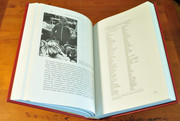 Tropical Forests and Their Crops
Tropical Forests and Their Crops was written by Nigel J. H. Smith, J. T. Williams, Donald L. Plucknett, and Jennifer P. Talbot and published in 1992 by Comstock Publishing Associates, a division of Cornell University Press in Ithaca, New York. It is a hardcover that measures 6.5x9.625 in. (164x244 mm.) with xvi+568 pages. The ISBN-10/ISBN-13 numbers are 0801427711/9780801427718. The text is in English, and it is a text-heavy book, illustrated by black-and-white photographs. Photographs of the table of contents and a couple of pages will give you an idea of the book's contents and how they are arranged.
Book description: “The tropics are the source of many of our familiar fruits, vegetables, oils, and spice, as well as such commodities as rubber and wood. Moreover, other tropical fruits and vegetables are being introduced into our markets to offer variety to our diet. Now, as tropical forests are increasingly threatened, we face a double-fold crisis: not only the loss of the plants but also rich pools of potentially useful genes. Wild populations of crop plants harbor genes that can improve the productivity and disease resistance of cultivated crops, many of which are vital to developing economies and to global commerce. Eight chapters of this book are devoted to a variety of tropical crops―beverages, fruit, starch, oil, resins, fuelwood, fodder, spices, timber, and nuts―the history of their domestication, their uses today, and the known extent of their gene pools, both domesticated and wild. Drawing on broad research, the authors also consider conservation strategies such as parks and reserves, corporate holdings, gene banks and tissue culture collections, and debt-for-nature swaps. They stress the need for a sensitive balance between conservation and the economic well-being of local populations. If economic growth is part of the conservation effort, local populations and governments will be more strongly motivated to save their natural resources. Distinctly practical and soundly informative, this book provides insight into the overwhelming abundance of tropical forests, an unsettling sense of what we may lose if they are destroyed, and a deep appreciation for the delicate relationships between tropical forest plants and people around the world.”
Condition: This book is in good condition. Ex-library with some library markings: a spine label, library stamps on the top page edge, and library stamps and barcode remnants on the inside covers. The dust jacket is missing (though there seems to be some dispute whether this book originally had one). The hardcover boards have light rubbing at the corners but no tears, creases, stains, or any major damage. The binding is strong and intact. The interior is mostly clean and unmarked with no writing or highlighting but with some pencil underlining in the mango section (as well as the aforementioned library markings) and has no tears, dog-eared pages, stains, mold, or other major damage. The page edges have the aforementioned library stamps but no remainder mark, foxing, stains, or other major damage.
The price for this book is $15. SOLDMy opinion: A great look at the ecology and anthropology of tropical fruits. It is not a growing guide in any way, which is why I am willing to sell it. However, the very detailed chapters on cacao and avocado (nearly 70 pages combined on various aspects of history, breeding programs, uses, etc.) are worth the purchase price alone to those interested in those fruits. Many other major fruits are also discussed at length. Although this copy is not in perfect condition, it is still a great reference copy of an interesting out-of-print book from a reliable seller at an affordable price.




